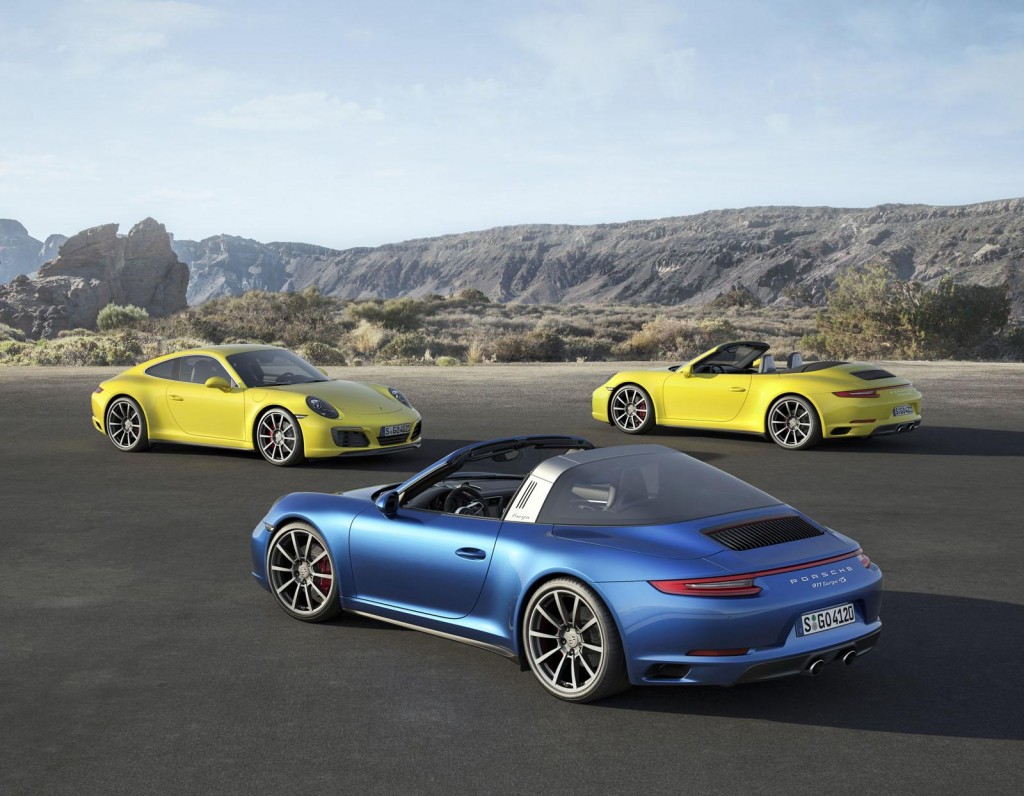-
Tips for becoming a good boxer - November 6, 2020
-
7 expert tips for making your hens night a memorable one - November 6, 2020
-
5 reasons to host your Christmas party on a cruise boat - November 6, 2020
-
What to do when you’re charged with a crime - November 6, 2020
-
Should you get one or multiple dogs? Here’s all you need to know - November 3, 2020
-
A Guide: How to Build Your Very Own Magic Mirror - February 14, 2019
-
Our Top Inspirational Baseball Stars - November 24, 2018
-
Five Tech Tools That Will Help You Turn Your Blog into a Business - November 24, 2018
-
How to Indulge on Vacation without Expanding Your Waist - November 9, 2018
-
5 Strategies for Businesses to Appeal to Today’s Increasingly Mobile-Crazed Customers - November 9, 2018
Porsche 911 Carrera 4 And Targa 4 Models Make Debut
October. 6, 2015: With the new 2017 911 Carrera 4 and 911 Targa 4 models, the traction advantage courtesy of an enhanced all-wheel drive system is paired with innovative turbocharged engines that are more powerful and consume less fuel than their predecessors.
Advertisement
Last month, Porsche revealed a facelift for the 2016 911 Carrera – including new 3.0 litre turbo engines – and now its time for the Carrera’s 4WD sibling to get a makeover – step forward the 2016 Porsche Carrera 4 in Coupe, Cabriolet and Targa styles – costing from £76,412 to £99,684. Thanks to twin-turbo technology, the three-liter, six cylinder engines in the 911 Carrera 4 and 911 Targa 4 develop 370 hp and 331 lb.-ft. of torque.
The 2016 Porsche Carrera 4, equipped with the PDK and the Sport Chrono Package, needs just 4.1 seconds to reach 100 km/h (62 mph) from a standstill, which is basically 0.4 seconds faster than before.
Using the Carrera models as an example, the latest twin-turbocharged engines provide around 20bhp more than their counterparts in the outgoing model. Variants with the most significant improvements are the Carrera S Cab and Targa 4S, each with PDK, in which average consumption falls by 1.2 litres to 8.0 l/100 km.
The new 911 is also available with an ‘active rear axle, ‘ which consists of rear-wheel steering derived from more extreme Porsche models like the Porsche 911 GT3 and Porsche 918 hybrid supercar. It offers Normal, Sport, Sport Plus, and a customisable Individual mode.
In Individual mode, drivers can choose their own preferences for PASM, the active engine mounts, shifting modes on the PDK transmission, and the sports exhaust system.
A new option on the 911 Carrera 4S is a four-wheel steer system, similar to that used by the 911 Turbo and GT3. Harmony between the re-engineered all-wheel drive and the retuned PASM chassis with its ten-millimetre lower ride height is thus even better.
We’re also informed of a cheery new feature labelled the “Sport Response Button”, which “pre-conditions” the drivetrain for a 20-second burst of maximum acceleration.
Traditionally, every new generation of engines from Porsche combines more output with less consumption. Thanks to “electro-hydraulically controlled all-wheel drive”, Porsche says that this is actually the first four-wheel drive 911 to beat its rear-driven brother in the acceleration stakes. New shock absorbers are also featured, promising a wider spread of driving characteristics and improved body control during dynamic driving.
There are new steering wheels with a design based on the 918 Spyder’s. The standard steering wheel has a diameter of 375 millimeters; the optional GT Sport steering wheel measures 360 millimeters. Pressing a button increases the ground clearance at the front spoiler lip by 40 millimetres within five seconds and thus prevents the vehicle underbody from hitting the ground, such as when negotiating steep garage exits.
The completely new PCM connectivity and infotainment system is standard and integrates new functions around the multi-touch display in the center console that now has a seven-inch format. User inputs by handwriting are also possible. Drivers can access real-time traffic information with a free one-year subscription.
Advertisement
A smartphone tray is now integrated into the centre armrest, offering charging and optimised phone reception.





























